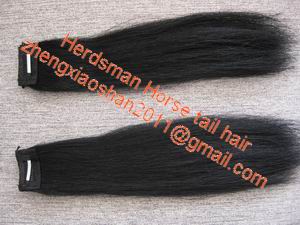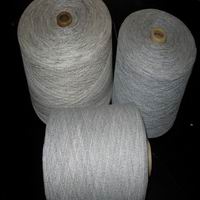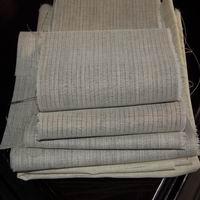A Horse of a Different Color Unusual Horse Colors
Dark and light shading
Brindles
The Rabicano
Pearl
Unique to horses in Argentina,horse forelocks manchado colored horses look like paint horses in many ways, but dont carry any genes for spots. It only occurs in Argentina, so it is probably caused by something in the environment, but what it could be no one knows. Birdcatcher spots are random white patches of hair on a dark coat. The pattern is also not genetic, and takes its name from a through bred racehorse that had the spots. Similar to Birdcatcher spots, Bend Or spots are non-genetic dark spots, also named for a thoroughbred racehorse.
A Horse of a Different Color - Tutorial
Shiny horses
One of the rarest of all equine colorings, brindle is a bit like sooty gone crazy. On a brindle horse, the coat appears a lighter color with striped clumps of dark hairs, a bit like a tabby cat (even more rare is a dark coat with white stripes). Brindle is what is called a chimeric gene. Chimeric genes occur when a mare is pregnant with two non-identical twins, but the two embryos become fused into one. What you actually have is two coat colors from two different horses all mixed up. This means chimeric genes, including brindles, horse hair jewelry are almost totally random and it is almost impossible to breed for it. Geneticists are still trying to figure out the truth behind the brindle gene. It is definitely striking though, and brindle horses often cost a lot of money.
Some horses appear to be bay or chestnut, but seem to be marbled or have areas of light or dark coloring. Horses with dark patches, usually on the back and shoulders, are called sooty, and horses with light patches are pangare. Fjords, with light underbellies, are often pangare. Pangare horses also often have lighter, flaxen manes and tails. The sooty modifier often explains dapples on bay horses too.
A recently discovered gene, pearl horses look a bit like palominos, but dont have the lighter manes and tails. It only occurs in horses with quarter horse or Spanish breed descent, and it still isnt entirely known how the gene works. In quarter horses, it seems to always trace back to a horse called My Tontime, and her grandson Barlink Macho Man, so it is sometimes called the Barlink ctor.
Weve had a lot of talk about coat colors (A Horse of a Different Color - Tutorial), so I thought it would be fun to take a look at some of the most unusual horse coat colors. Some of these are still mysteries, but whatever causes them, they certainly are fun to see.
HPH, sorry, that photo was meant to illustrate the shiny coat of the Akhal-teke, not the pearl color. Oops!

Having a horse with an unusual color is a lot of fun, but remember beauty is only skin deep. It doesnt matter if your horse is a one-in-a-million genetic oddity, or one of a million bays, a good horse is worth its weight in gold!
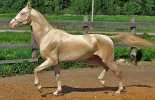
Ponybox receives over 500,000 page views each day. Want to advertise on Ponybox? and download our media kit for prices and availability.
Weird spots
HPH, sorry, that photo was meant to illustrate the shiny coat of the Akhal-teke, not the pearl color. Oops!
EXAMPLES: Submit news about an upcoming equestrian event, event results, press releases of equestrian products or websites, fictional and non-fictional horse stories, event photos, horses for sale or stud, boarding cilities, barn gossip, undercover images of abused horses.
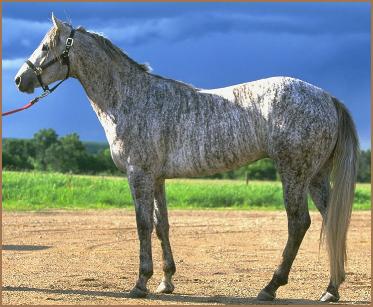

Silver
Called the Z gene or Z ctor, silver is a dilution of a black coat, usually resulting in a dark chocolate color with a very light mane and tail. Where it comes from is still unclear, but it certainly is beautiful!
As for silvers, the silver gene originates in Scandinavia, so descendants of Scandinavian horses, including Icelandic and Nordic ponies, the British pony breeds, and even Scandinavian warmblood breeds also produce silvers. It is suggested that the Rocky Mountain Horse and some other gaited American breeds that produce silvers (like the Fox Trotter) may trace their ancestry - and even their gait - to Scandinavian ponies.The color may be a key to finding one link in the heritage of the American horse!
Often confused with a roan, a rabicano horse doesnt actually have a roan gene, even though it looks roany. How can you tell the difference between a rabicano and a roan? The roan coloring of a rabicano is A Horse of a Different Color Unusual Horse Colorsusually only on its belly and flanks, and rabicano usually have white hairs at the top of the tail, called a skunk tail.
As for silvers, the silver gene originates in Scandinavia, so descendants of Scandinavian horses, including Icelandic and Nordic ponies, the British pony breeds, and even Scandinavian warmblood breeds also produce silvers. It is suggested that the Rocky Mountain Horse and some other gaited American breeds that produce silvers (like the Fox Trotter) may trace their ancestry - and even their gait - to Scandinavian ponies.The color may be a key to finding one link in the heritage of the American horse!
Most horses can shine just fine with good grooming, but some are born with extremely glossy coats. Some are the result of breed characteristics, like the Akhal-Teke, who have shiny or metallic coats because the hairs of the coat are hollow and reflect more light. Some other horses have this shiny, or satin appearance too. Some horses with the champagne color gene, which lightens base coat colors, can also have a striking sheen, but it isnt clear why. Is there a shiny or satin gene that occurs outside of the Akhal-Teke, maybe unique to champagne horses? We just dont know yet.
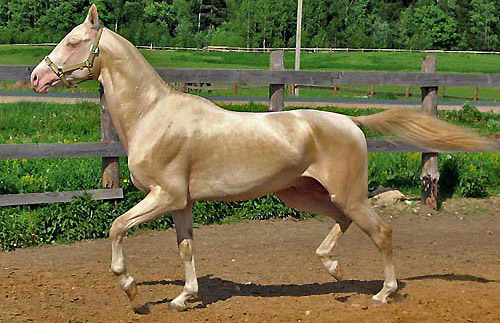
Actually, the horse in the pic you are calling pearl is a perlino. This is a double dilute of buckskin- meaning you have to breed two buckskins together and the offspring gets both dilution genes in order to get this color. Just like breeding two paliminos and getting a cremello. This can occur in any breed of horse that has buckskins or palominos.
Actually, the horse in the pic you are calling pearl is a perlino. This is a double dilute of buckskin- meaning you have to breed two buckskins together and the offspring gets both dilution genes in order to get this color. Just like breeding two paliminos and getting a cremello. This can occur in any breed of horse that has buckskins or palominos.

